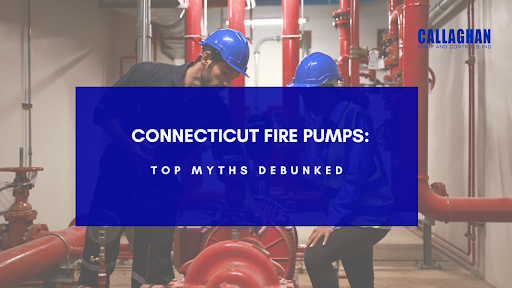
August 22nd, 2024
Fire pumps are essential components of fire protection systems, ensuring that water is delivered at the right pressure to fight fires effectively. Despite their importance, several myths surround Connecticut fire pumps, leading to misconceptions that can affect the safety and functionality of buildings. In this blog, we’ll debunk some of the most common myths about fire pumps and provide clear, factual information to help you make informed decisions.
Whether commercial or residential, fire pumps play an imperative role in ensuring that a building’s fire protection system operates effectively during an emergency. Despite their importance, several misconceptions can lead to misunderstandings about how fire pumps function and what they require. Here are some of the most common misconceptions about fire pumps busted:
Myth 1: Fire Pumps Are Only Necessary for Large Buildings
Many people believe that a Connecticut fire pump is only needed in large commercial buildings or high-rise structures. However, this is far from the truth. Fire pumps are essential for any building where the water pressure from the municipal supply is insufficient to meet the demands of the fire protection system. This can include small commercial properties, residential complexes, and even industrial facilities. Regardless of the building size, if the water pressure is inadequate, a fire pump is necessary to ensure the safety of occupants and property.
Myth 2: Regular Maintenance Is Not Necessary for Fire Pumps
Another common myth is that once a Connecticut fire pump is installed, it doesn’t require regular maintenance. This misconception can lead to serious safety hazards. Like any mechanical system, fire pumps need routine inspections and maintenance to function correctly. Without regular maintenance, components can wear out or fail, reducing the pump’s effectiveness during an emergency. Ensuring that your fire pump is regularly inspected and maintained by qualified professionals is crucial for the safety of your building.
Myth 3: Fire Pumps Are Too Expensive for Small Businesses
Some small business owners believe that Connecticut fire pumps are too costly for their budget. While fire pumps do require an investment, they are critical for protecting your business from potentially devastating fire damage. The cost of installing a fire pump is far outweighed by the protection it provides. Additionally, there are various types of fire pumps available, with options that can suit different budgets. Investing in a fire pump is not just about compliance with regulations; it’s about safeguarding your business and the lives of those within the building.
Myth 4: Fire Pumps Will Always Work in an Emergency
Many people assume that once installed, a fire pump will automatically work when needed. While fire pumps are designed to operate in emergencies, several factors could prevent them from functioning correctly, such as electrical failures, mechanical issues, or inadequate maintenance. It’s essential to regularly test and maintain your fire pump to ensure it’s ready to perform when needed. Regular testing can help identify potential problems before they become critical, ensuring that your fire pump will work as expected during a fire.
Myth 5: Any Pump Can Be Used as a Fire Pump
There’s a misconception that any water pump can be used as a fire pump, but this is not true. Fire pumps are specifically designed to meet the rigorous demands of fire protection systems. They must deliver high-pressure water over a sustained period, something that standard water pumps are not designed to do. Fire pumps must also comply with stringent safety standards and regulations, which standard pumps do not meet. Using a pump not designed for fire protection can lead to inadequate water pressure during a fire, putting lives and property at risk.
Myth 6: Fire Pumps Are Noisy and Disruptive
Some building owners hesitate to install fire pumps because they believe the pumps will be noisy and disruptive to daily operations. While older models may have been loud, modern fire pumps are designed with noise reduction in mind. Additionally, fire pumps are typically installed in designated pump rooms or areas where noise is less of a concern. The noise level of a properly installed and maintained fire pump is unlikely to cause significant disruption to your building’s occupants.
Myth 7: Once Installed, Fire Pumps Don’t Need to Be Upgraded
A common belief is that once a fire pump is installed, it never needs to be upgraded. However, as buildings age, their fire protection needs may change due to renovations, expansions, or changes in building codes. It’s important to reassess your fire pump periodically to ensure it still meets the building’s requirements. Upgrading or replacing an outdated fire pump can improve the safety and compliance of your fire protection system, ensuring that your building remains protected against fire hazards.
Understanding the facts about Connecticut fire pumps is essential for ensuring the safety of your building and its occupants. Investing in a reliable fire pump is a critical step in protecting lives and property from the devastating effects of fire.
Don’t let myths guide your decisions. Ensure your fire protection system is up to standard by consulting with experts and prioritizing the maintenance and performance of your fire pumps. To know more about fire pumps, contact us today.
john@callaghanpump.com,
eileen@callaghanpump.com,
dan@callaghanpump.com,
sales@callaghanpump.com,
service@callaghanpump.com












